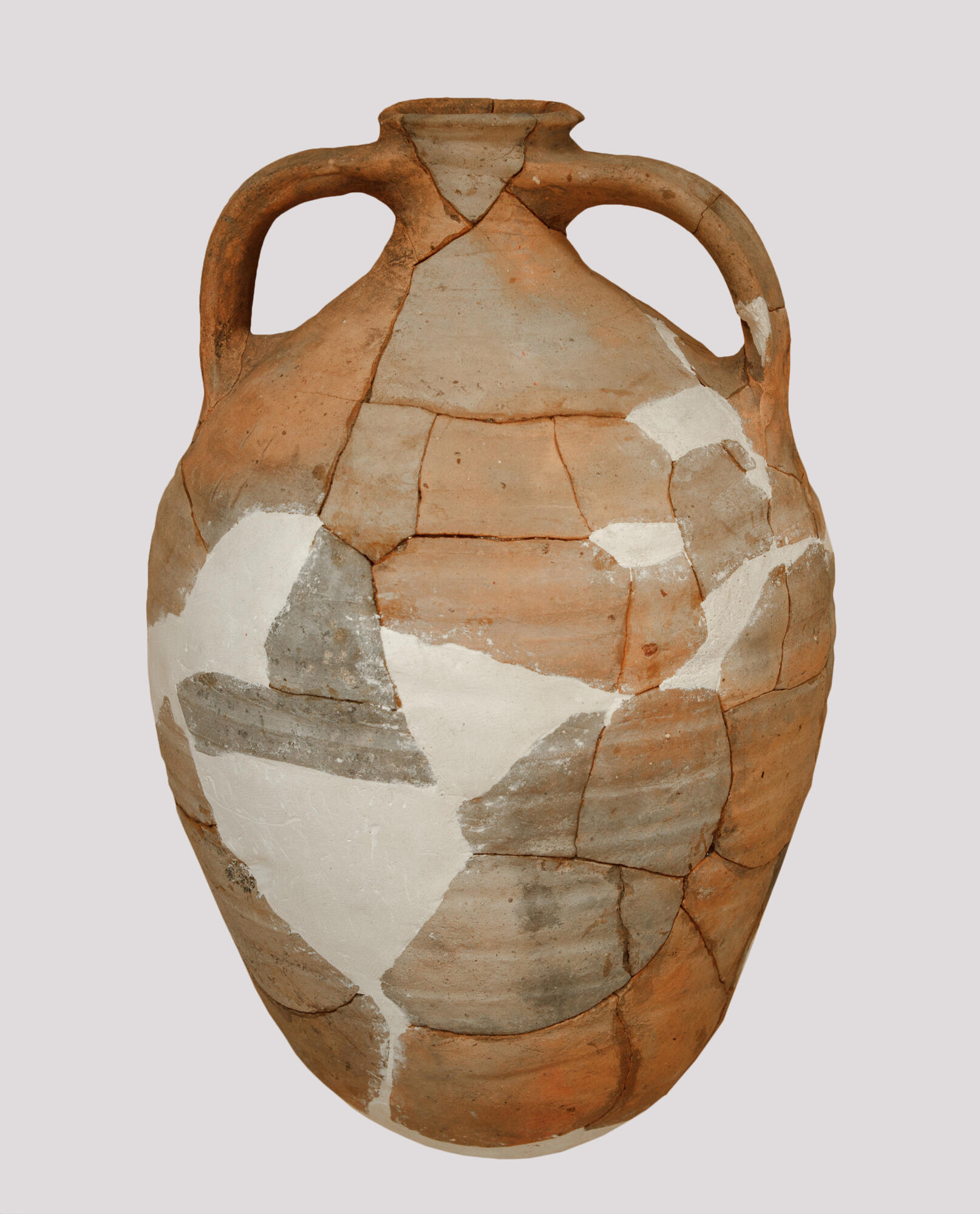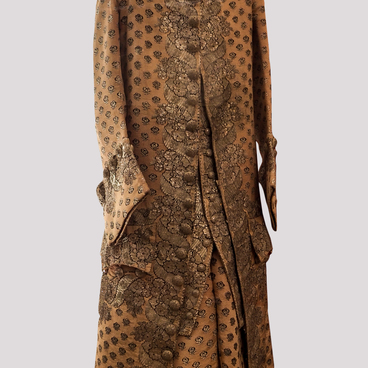In 1949, near the village of Gnezdovo, Smolensk District, an archaeological expedition of the Moscow State University under the leadership of Professor Daniil Antonovich Avdusin discovered in mound No. 13 of the Forest Barrow Group a large fireplace containing the remains of male and female burials. There were also found scattered shards of a pottery vessel, deliberately broken during the funeral. The vessel was glued together — it turned out to be a clay Byzantine amphora. ‘Korchaga’ amphora is a large clay vessel with a wide rim and two handles. Such an amphora was the counting unit of the goods of the Middle Ages.
Such amphorae served for transportation, storage and accounting of goods — for example, oil, grain or wine — and were widespread in the Northern Black Sea region.
Scratched graffiti in Cyrillic — ‘goro (u)khshcha’ was noticed in the upper part of the vessel. There are several ways to read this inscription. According to Avdusin, the word ‘goroukhshcha’ could mean expensive spices, such as mustard seed or oil. Soviet archaeologists Korzukhin and Lvov assumed that this was the name given to a certain combustible. Linguists Yakobson, Kiparsky and Trubachev believed that the word ‘Gorouna’ is written on the amphora — a masculine name in the genitive case, perhaps this is the name of the amphora’s owner. Doctor of Historical Sciences Medyntseva suggested that the inscription on the korchaga means the name of a soldier-merchant buried in the mound, who traveled “from the Varangians to the Greeks” — Gorun or Gorunsha.
According to the Arab dirham coins and other things found in the remains of the burial, it was stated that the burial was performed according to pagan rites, and the mound was created around the middle of the 10th century. Thus, “goroukhshcha” is the most ancient Russian inscription known to date. The graffiti was made during the reign of the second or third ruler of Ancient Russia — Oleg the Seer and Igor the Old. This unequivocally gives reason to believe that literacy in Russia existed even before the Christianization.
Amphora “goroukhshcha” is a symbol of Russian writing, its monument and source.
Such amphorae served for transportation, storage and accounting of goods — for example, oil, grain or wine — and were widespread in the Northern Black Sea region.
Scratched graffiti in Cyrillic — ‘goro (u)khshcha’ was noticed in the upper part of the vessel. There are several ways to read this inscription. According to Avdusin, the word ‘goroukhshcha’ could mean expensive spices, such as mustard seed or oil. Soviet archaeologists Korzukhin and Lvov assumed that this was the name given to a certain combustible. Linguists Yakobson, Kiparsky and Trubachev believed that the word ‘Gorouna’ is written on the amphora — a masculine name in the genitive case, perhaps this is the name of the amphora’s owner. Doctor of Historical Sciences Medyntseva suggested that the inscription on the korchaga means the name of a soldier-merchant buried in the mound, who traveled “from the Varangians to the Greeks” — Gorun or Gorunsha.
According to the Arab dirham coins and other things found in the remains of the burial, it was stated that the burial was performed according to pagan rites, and the mound was created around the middle of the 10th century. Thus, “goroukhshcha” is the most ancient Russian inscription known to date. The graffiti was made during the reign of the second or third ruler of Ancient Russia — Oleg the Seer and Igor the Old. This unequivocally gives reason to believe that literacy in Russia existed even before the Christianization.
Amphora “goroukhshcha” is a symbol of Russian writing, its monument and source.



